Blue screen of Death error, like bad pool caller, is the last thing you want to see on your computer screen because it completely disrupts what you are doing.
Irritating as bad pool caller error and other BSODs are, the good news is they are often not hard to resolve. The case in point is bad pool caller error, which an average user can resolve fairly quickly by himself.
In this post we’ve provided several solutions to bad pool caller error. You don’t have to try each of these. Start with the first solution in the list and move on to the next one and so on, till the issue is fixed. (And yes, don’t forget to leave a comment telling us which solution worked for you.)
What is bad pool caller error?
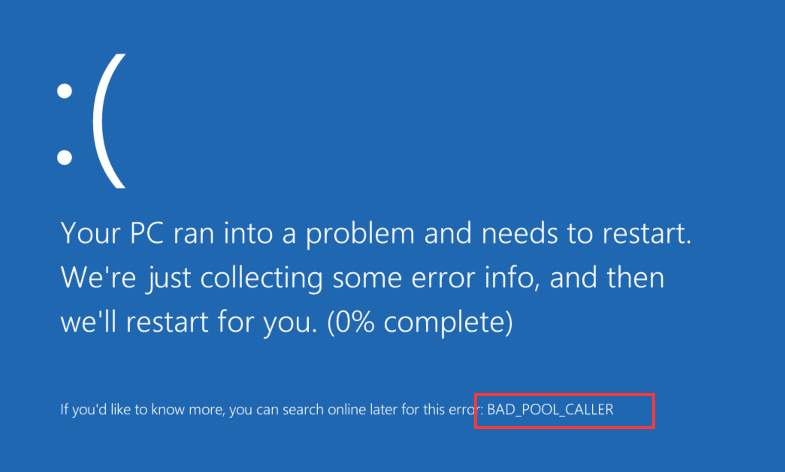
The Bad pool caller error is mostly caused by over-clocking or faulty drivers. The pool in the error refers to memory allocated to drivers. The Pool errors are generated by the system when a piece of data referred does not exist in memory or the allocated memory cannot be released.
The bad pool caller error generally results in Blue Screen of Death and you see memory dumps after the error is generated.
Before Doing Anything
Before performing any troubleshooting steps, we recommend users to install all pending updates.
This is because Windows 10 is not a perfect system yet and Microsoft provides updates to fix any bugs or performance issues that can hamper user experience.
To install updates, perform the steps given below.
- Click Start
- Select Settings- > Updates and Security
- On the right side of the pane, click Check for updates
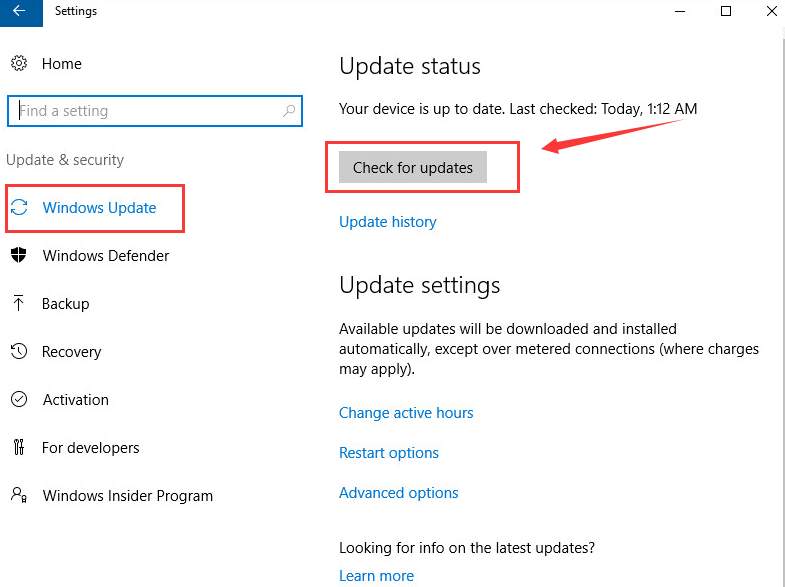
- If you see there are any available updates, install them before you perform any troubleshooting steps given in this post.
- Also, run the antivirus program scan and ensure your system is free from virus and malware.
Once you have completed these two steps you can proceed to try solutions given below.
Solution One – Revert any system changes
If you have installed any hardware or software recently, we suggest you remove them and revert the system to the previous state. See if the problem is fixed. If you still get the BSOD error, move on to next solution.
Solution Two- Update drivers
Corrupt or incompatible device drivers account for the majority of BSOD errors. In such cases, updating device drivers might resolve the issue.
There are two ways to update device drivers – manually and automatically.
Updating drivers manually involve many steps and it might be difficult for you if you haven’t done it earlier. You are required to visit device manufacturer (for laptops) and hardware manufacturer website (for assembled PC’s) to find driver updates. In addition to these, you need to know some other details too, like your Windows architecture (32-bit or 64-bit). Plus there’s always a risk of downloading wrong drivers.
That’s why a much better way is to use a driver update tool. With it, you can update all your drivers with a single click. Moreover, there’s no risk of downloading wrong drivers.
Automatic driver update tools offer many benefits, the most important ones being:
- You can update device drivers automatically
- The software scans and updates all outdated or missing drivers at one go
- The tool picks the right drivers for your device and operating system, so you won’t have to worry about installing an incorrect driver by mistake
- Automatic driver updates are 100% safe
Driver Updater is one of the best driver update tools out there. Outbyte Driver Updater will give you access to a database of over 1 million drivers. It will regularly scan your PC, suggesting new driver versions to install. Driver Updater contains drivers for a variety of Windows devices. With just one click, you can update drivers in your system.
Step 1
Click here to Install and launch the app
Step 2
Scan all devices
Step 3
Install or update drivers automatically
Solution Three-Run a memory check
Faulty RAM can be one of the causes of bad pool caller error. You can check whether the RAM is at fault by using the Windows Memory Diagnostics tool. Here are the steps to follow.
- Press Windows key and R simultaneously on the keyboard to invoke Run command tool
- Type mdsched.exe in the Run command box and click OK
- You get two options- Restart now and check for problems (recommended) and Check for problems the next time I start my computer
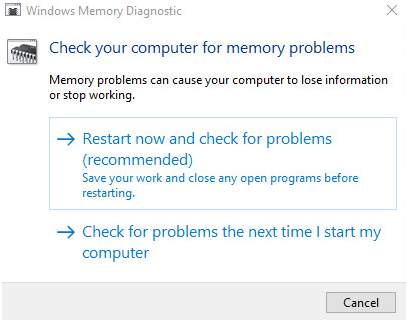
- If you select the first option, the Windows will reboot immediately and run the Windows Memory Diagnostics If you don’t want to run the Windows Memory diagnostics tool immediately and want to schedule it later, choose the second option.
- When the PC restarts, you will see Windows Memory diagnostics tool running tests and checking RAM for any faults. The test may take around 10 minutes to complete. If the Windows Memory diagnostics tool does not show any error, you can draw a conclusion the RAM is not at fault and the bad pool caller BSOD error is occurring because of some other reasons.
Solution Four- check the hard drive for errors
Besides faulty RAM, corrupt hard drive or bad sectors on the hard drive can be one of the causes of bad pool caller error.
Here are the steps to determine whether the hard drive is at fault.
- Click Start-> File Explorer -> This PC
- Right-click on the hard drive partition you want to check and click Properties
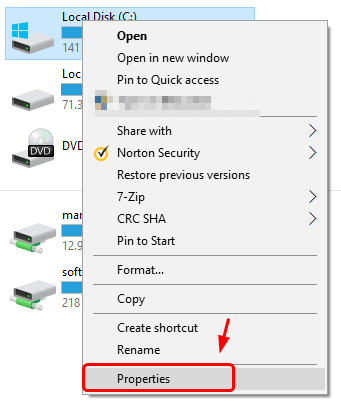
- Go to Tools tab and click Check
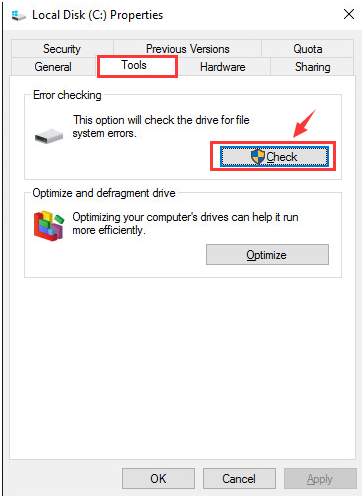
- Repeat the above steps to check other hard drive partitions
- If your hard drive is in good health, you will see a message like this.
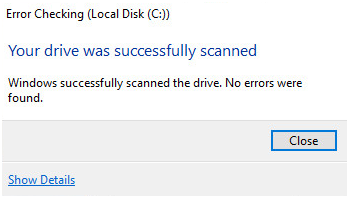
Other solutions
In case none of the above-mentioned solutions work for you, we recommend you try the additional solutions given below. Several users have reported that they have been able to fix the issue using these solutions, so in our opinion they are definitely worth a try.
Update BIOS
Updating BIOS might help resolve the issue. However, you must understand there is some degree of risk involved when you update BIOS. A wrong step here could cause further complications. Therefore, try this step only if you feel confident. The steps to update BIOS can vary from one PC to another, depending on the brand or motherboard manufacturer. Therefore, visit your device manufacturer website or your motherboard manufacturer website to know the steps you need to perform to update your BIOS.
Uninstall third-party anti-virus program
Some times 3rd party anti-virus programs might cause bad pool caller error. Uninstall 3rd party anti-virus program and use the inbuilt Windows Defender program to protect your PC. If the issue is resolved, you should contact your antivirus manufacturer and tell its customer support about your problem. Alternative, you can also shift to another 3rd party antivirus program or continue using just Windows Defender, which is a perfectly capable virus and malware protection tool, particularly for independent users.
Use Driver Verifier
Windows provides a Driver Verifier diagnostic tool to find problems with drivers. The Driver Verifier tool is readily available in all Windows operating system except for Windows 10 S.
Here are the steps to use Driver Verifier.
- Open Command prompt window (with administrator rights)
- Type verifier to open the Driver Verifier Manager
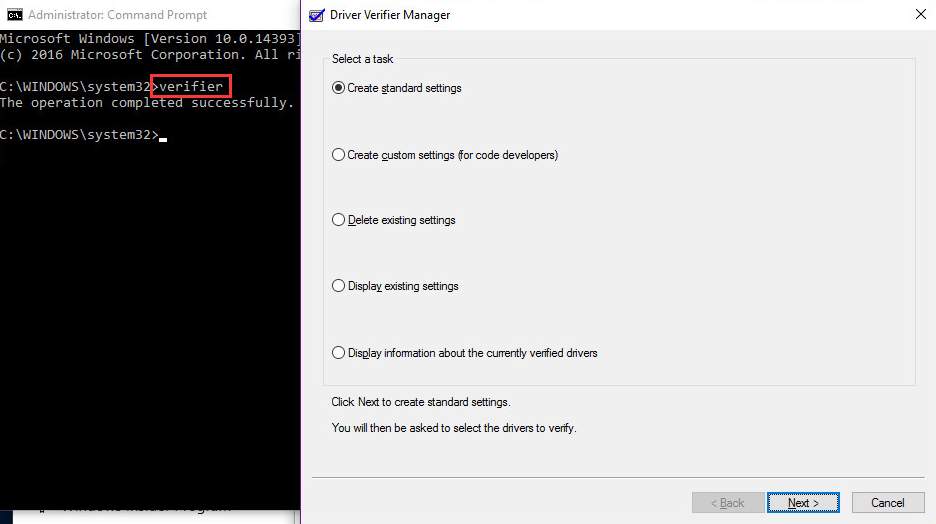
- Type verifier /? to view different command line options
Reset Windows
If nothing has worked for you, the last option you have is to Reset Windows.
Note: Before you reset Windows, ensure you backup your files and applications.
Here are the steps you need to follow to reset Windows 10.
- Go to Settings and click Update & Security
- Among the various options in the left pane, click Recovery
- You’ll have three options in front of you: Reset this PC, Go back to an earlier build, and Advanced Startup. You should select Reset this PC
- Click Get Started
- Here you’ll have two options in front of you: Keep my files and Remove Everything. Which one you should choose depends solely on whether you wish to keep your files or not. Pick the one that’s suitable for you
- Again you’ll have two options in front of you: Just remove my files and Remove files and clean the drive. We suggest you click Just remove my files
- Click the Next button
- Click on the Reset button
- Click Continue

Leave a Reply